Strange Attractor is Reynolds’ second solo exhibit for the gallery, and in a number of tangential developments from her previous work she employs a series of differing strategies for the display and manipulation of images originally created as bookplates. The preferred imagery centres around interiors of buildings culled from guidebooks. The approaches Reynolds takes in handling these artefacts are more complex and also simpler than in previous work, ranging from the presentation of unaltered pages, the simple joining of two images, to an intricate splicing of four or five sheets.
The piece Visitors (2010) is a grouping of un-altered pages showing photographs of architecture presented as an archive or collection. Displayed on a fabricated structure somewhere between easel and archival display table, the viewer is encouraged to simply compare the components that make up the work.
The wall-based works vary in complexity. Just one cut may dissect a single page, into which a second whole sheet has been inserted, flat, slicing the room in half. The resulting combined image creates a new fictionalised space where depicted details align, continuing from one photograph to another. Architectural features in one rococo hallway step over the page edge and persist in another space, which is both historically and geographically distinct from its neighbour. These disparate and quasi-imaginary spaces cohere as an imaginative possibility offered to the viewer, that of collapsing time and space.
The composite spaces may involve three, four or five separate images, cut and spliced together, within which lines of perspective continue from one photograph to another, crossing cuts. Columns align; carpets continue from one building to another; ornate staircases form a series of nearly manageable perspectives.
In some works the rooms violently perforate one another, in other pieces the effect is more a subtle growing of one place through another as the perspective of one attempts a dominance over the others. One architectural feature may meet with another from a separate time and place creating a coherent row of arches or consistent domed ceiling, but this felicitous union of forms is fleeting and the multiple room is utterly disjointed and contradictory elsewhere. Reynolds’ new works hold out the possibility of spatial success contained within the photographic archive, but pictorially they also generate their own failure or disruption. They aspire to a unified pictorial space, which fleetingly aligns, meshes, and synchronizes but this momentary unification underscores its impossibility, amplifying the jarring failure and rupture elsewhere within and beyond pictorial space.

Abigail Reynolds, Installation view, 2010

Abigail Reynolds, Installation view, 2010

Abigail Reynolds, I invert my eyes (Caserta), 2010
Collaged vintage bookplates
34.8 x 28.9 cm

Abigail Reynolds, Apparition (Benrath), 2010
Collaged vintage bookplates
32.7 x 31.1 cm
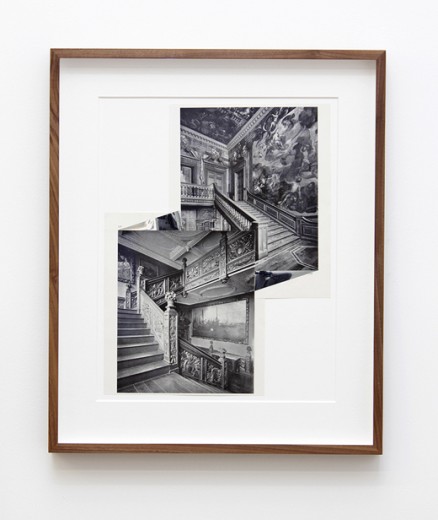
Abigail Reynolds, Descent, 2010
Collaged vintage bookplates
54.5 x 45.3 cm
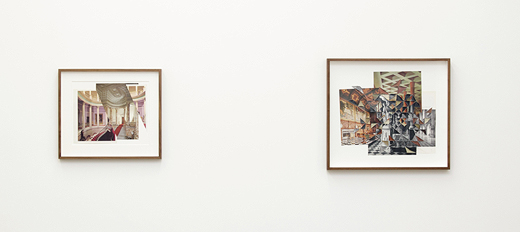
Abigail Reynolds, Installation view, 2010
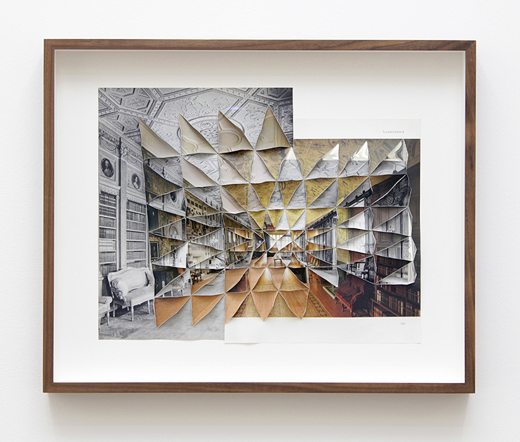
Abigail Reynolds, Long Gallery, 2010
Cut and folded vintage bookplates
43 x 52.5 cm
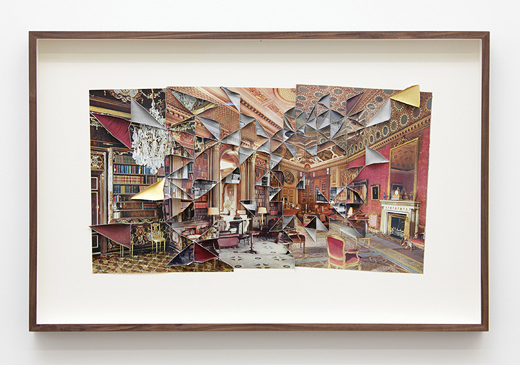
Abigail Reynolds, Red Library, 2010
Cut and folded vintage bookplates, gold leaf
50.1 x 77.6 cm

Abigail Reynolds, For the Dictators (Napoleon, Mussolini), 2009-10
Cut and folded vintage book plates
55.1 x 81.1 cm
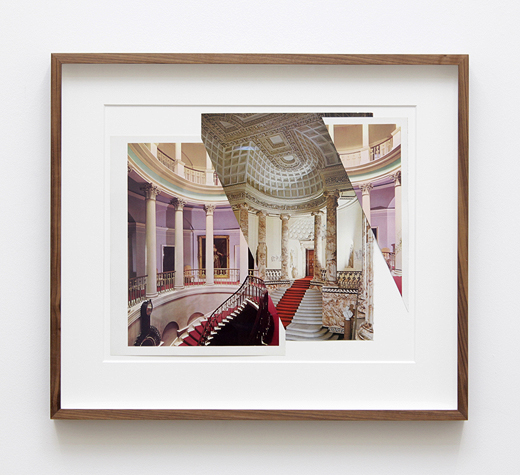
Abigail Reynolds, Marble Hall, 2010
Collaged vintage bookplates
44.4 x 50.7 cm
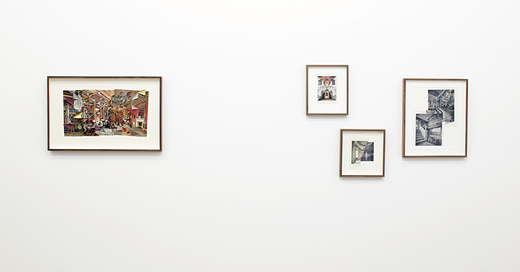
Abigail Reynolds, Installation view, 2010

Abigail Reynolds, Grand Entry, 2010
Cut and folded vintage bookplates
46.1 x 58.1 cm